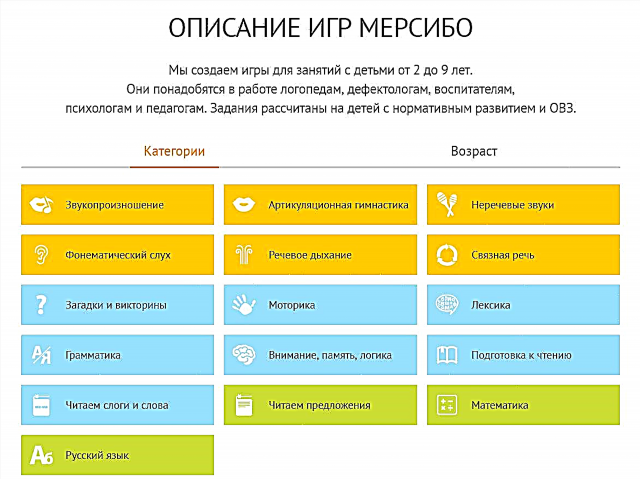
Early pregnancy is extremely important. At this time, very interesting changes take place in the growing organism of the fetus.

Physiological features
Week 11 is almost the end of the first trimester of pregnancy. Intrauterine development of the fetus by this time is very active. Many internal organs and systems are already practically formed. In the future, they will continue to improve and differentiate.
At 10-11 obstetric weeks of pregnancy, specific changes occur not only with the baby, but also with his mother. A woman undergoes many changes and new sensations appear. As a rule, at this stage of pregnancy, the expectant mother already feels a close bond with her baby. The size of pregnant tummies at 11 weeks of gestation is already changing. At the same time, as the child grows, the abdominal circumference of his mother continues to increase.
If the expectant mother bears several babies at the same time, then the circumference of her abdomen is slightly larger than in a singleton pregnancy.


The baby's position is quite comfortable. The fetus is in a bladder filled with amniotic fluid. At this stage of his intrauterine life, the child begins to open and close his mouth. This feature is necessary for its further intrauterine development.
Many mothers are afraid that the baby may drown in amniotic fluid. You shouldn't worry about this. The new organism is naturally adapted to life in the aquatic environment during its intrauterine development. Swallowing amniotic fluid is necessary for the further formation of the excretory system. This is how the child learns to urinate independently.
By this period of time, the skeleton continues to form in the child. Every day, the density and structure of bones are getting stronger. At this time, it is very important that the expectant mother gets enough calcium.

This element is necessary for strengthening bone tissue. Its sufficient amount is found in fermented milk products. A woman who is expecting a baby needs to include them in her daily menu.
By the 11th week of pregnancy, the child has already actively developed the nervous system, as well as analyzers. Many babies at this stage of their intrauterine life are already beginning to feel and hear. At this time, the expectant mother can already talk with her baby. The active development of nerve analyzers contributes to the fact that the child can feel the experiences of the mother.

If a woman is constantly worried, then this can negatively affect the condition of her baby.
At this stage of pregnancy, the child already begins to smell. So, the baby may smell too strong. This leads to the fact that the child's physical activity increases.
Every day of pregnancy, the baby develops more and more intensively. This contributes to the fact that the bond between mother and child only increases. The calm mood and positive attitude of the mother have a positive effect on the intrauterine development of her baby.
The child tries to make active movements with his tiny arms and legs. As a rule, they are still of small amplitude. In the future, the number of performed movements will only increase.

It is important to note that the expectant mother does not yet feel how her baby is moving.
Babies of this prenatal age begin to study themselves. They can touch their face. Such an interesting action is often noticed by ultrasound specialists during an examination. It is possible to see the baby's face during such a study if he does not turn away from the ultrasound face.
The behavior of the twins at this stage of pregnancy is very interesting. The kids begin to slowly study each other. They touch themselves and their “neighbor” by the nose, they can touch each other. Interestingly, they can smile or make faces.
In the fetus at this time, the liver, pancreas and intestines begin to gradually function, the first metabolic processes take place.
The liver at this stage is already quite large in terms of the occupied area in the child's body. The baby has the first contractile bowel movements. This is not real peristalsis yet. It is just being formed and will start functioning a little later.


Anatomy
At this stage of pregnancy, the intrauterine development of the baby has several interesting features. His body grows somewhat faster than the head. At this stage of life, the child has already actively formed large joints. Also, the baby already has small fingers. The thumbs are already somewhat different in shape and size from the rest.
By this time, the child's tail completely disappears. The kid already practically looks like a person. With each new day of pregnancy, the structure of his body will only improve. At this stage of pregnancy, the baby's arms develop somewhat more intensively than the legs. At 11 weeks old, a baby is actively laying small nails, as well as tooth buds.
At this stage of pregnancy, the fetal brain is actively developing. Its main departments continue to form and differentiate. The first rudiments of hormones are already beginning to form in the pituitary gland. The number of nerve cells is growing rapidly every day.


At 11 weeks, the connection between the nervous and muscular systems improves. Thus, through the nerves, the muscles are provided. The better this interaction, the more movements the baby makes.
At this stage of pregnancy, many internal organs of the fetus are already beginning to gradually function. The face and its features are changing. It becomes more elongated. The child's nose acquires a specific contour, but it can still remain flat.
The baby's ears also change. At this time, the formation of the cartilaginous auricle is actively taking place. The shape of the baby's ears is still inconclusive. It will be finally formed a little later.


In babies of this prenatal age, the external genitals of a boy and a girl already have pronounced differences.
By this time of intrauterine development, the child's diaphragm is almost completely formed. This muscular apparatus is necessary to separate the chest and abdomen. Also, these muscles are involved in breathing.
An interesting feature of this period is the beginning of the formation of the iris of the eyes. The fetus begins to develop visual pigment. In the future, he will determine the color of the child's eyes. Babies develop small eyelashes and eyebrows.

During this time of pregnancy, the baby's immune system is being formed. The first lymphocytes begin to appear in the baby's bloodstream. These immune cells protect the body from the penetration of various infections. The baby's immunity will continue to improve in the future. Specific changes also take place in the spinal cord. There, the child begins to appear red blood cells - erythrocytes.

Parameters
The size of the fetus at 11 weeks of gestation is still very small. Its weight is about 10-12 grams. The baby's height at this stage of pregnancy is approximately 6-9 cm.
By the end of the first trimester of pregnancy, the blood supply to the fetus is carried out through the blood flow system common with the mother. She continues to improve every day. This is necessary to ensure that the baby receives enough nutrients and oxygen for its full growth.
By this time of pregnancy, the child has already had a foundation of the cardiovascular system. The little heart is already beating. This can be determined using special research methods.

Norms for ultrasound
Ultrasound examination during pregnancy is an important diagnostic method. It allows you to identify various pathologies of the reproductive organs in a pregnant woman, as well as describe the parameters of the fetus. To assess the development of the baby, experts use various clinical criteria.
One of them is the coccygeal-parietal size. At this stage of pregnancy, the CTE is approximately 5 centimeters. With each day of pregnancy, it only continues to increase.
During the ultrasound examination, the doctor necessarily evaluates the signs of genetic and chromosomal diseases. It is especially important to carry out this study for women with a burdened history of these pathologies.

If any of the close relatives of the expectant mother has genetic diseases, then she should definitely warn her doctor about this.
Also, at this stage of pregnancy, an ultrasound specialist necessarily evaluates the amount of amniotic fluid. If there are too many of them, then polyhydramnios is determined in this case. A decrease in the amount of amniotic fluid is called oligohydramnios. Both of these clinical conditions are unfavorable to the fetus.
At this stage of pregnancy, the amount of amniotic fluid sufficient for optimal intrauterine development of the fetus is about 30-35 ml. In its chemical composition, this liquid resembles blood plasma. The baby, swallowing it, can feel its taste, which is most often salty.
The doctor can prescribe an ultrasound examination at the 11th week of pregnancy for expectant mothers who are expecting several babies at the same time... Multiple pregnancies can be complicated. In order to timely identify various pathologies in each of the babies, this study is carried out.

An equally important assessed clinical parameter is the place of attachment of the baby and the placenta. An ultrasound specialist carefully examines this child's place. It evaluates the density, size and blood vessels of the placenta.
The doctor examines the size of the uterus. At this stage of pregnancy, she is still in the pelvic region. In the future, it will grow and rise higher. This will be facilitated by the active growth of the child.
In thin women, the enlarged uterus is visible as a small protruding tubercle in the lower abdomen. With each subsequent week of pregnancy, the belly of the expectant mother will continue to grow.

About what happens at 11 weeks of pregnancy with a woman and a fetus, see the next video.



